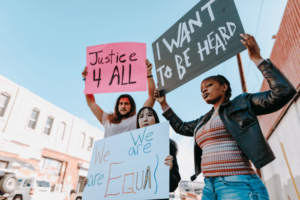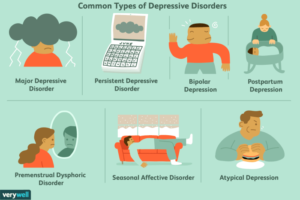
Welcome to the world of Disability advocacy, where we wave our metaphorical flags and chant the battle cries for equality! Picture a superhero squad, armed not with capes but with policies, pushing for a world where everyone can roll, stroll, and thrive—regardless of their abilities.
Disability advocacy is the beacon of hope that illuminates the path towards equal rights, showcasing the tireless efforts of various organizations that champion the cause. Legislation plays a pivotal role in this arena, shaping the landscape of disability rights and ensuring that every voice is heard loud and clear. So, buckle up as we embark on this enlightening journey to explore the critical importance of advocating for the rights of individuals with disabilities!
Disability Advocacy

Disability advocacy is the superhero cape we all need in the quest for equal rights and opportunities in society. Like a trusty sidekick to the everyday citizen, advocates tirelessly work to ensure that people with disabilities can leap over the barriers that society often places in their way. With the collective power of voices united, they push for change, understanding, and acceptance, ensuring that every individual, regardless of their abilities, can lead a fulfilling life.One of the cornerstones of disability advocacy is its ability to spotlight the importance of equal rights.
Advocacy helps to ensure that individuals with disabilities have access to the same opportunities as their non-disabled peers, from education to employment, and from public services to community participation. Without advocacy, many people with disabilities would face systemic barriers that could limit their full participation in society. This is where key organizations come into play, standing at the frontline of this vital movement.
Key Organizations in Disability Advocacy
Disability advocacy is not a solo act; it thrives thanks to various organizations that work tirelessly to champion the rights of individuals with disabilities. These organizations not only raise awareness but also drive legislative change and provide essential services. Below are notable organizations that have made significant contributions to this important cause:
- The Arc: Founded in 1950, The Arc works to promote and protect the rights of individuals with intellectual and developmental disabilities. They provide advocacy at both local and national levels, ensuring that individuals can access essential services.
- ADA National Network: This organization helps communities understand and implement the Americans with Disabilities Act (ADA). They provide guidance, resources, and training to ensure compliance and to advocate for the rights of individuals with disabilities.
- National Federation of the Blind (NFB): The NFB focuses on ensuring that blind people are included fully in society. Through advocacy, education, and various programs, they work to eliminate societal barriers and promote opportunities for the blind.
- Disability Rights Advocates (DRA): DRA engages in legal advocacy to protect the civil rights of individuals with disabilities. They take on important litigation that leads to policy changes and increased access to services.
These organizations embody the spirit of advocacy by providing a platform for individuals to have their voices heard and by advocating for systemic changes that benefit everyone.
Impact of Legislation on Disability Rights and Advocacy Efforts
Legislation plays a crucial role in shaping the landscape of disability rights and advocacy. Through laws like the Americans with Disabilities Act (ADA), the Rehabilitation Act, and the Individuals with Disabilities Education Act (IDEA), significant strides have been made in securing rights and protections for individuals with disabilities. Each piece of legislation acts as a stepping stone toward a more equitable society.The ADA, for instance, prohibits discrimination based on disability in various areas, including employment, public accommodations, and telecommunications.
It empowers advocates to challenge discriminatory practices and systems that would otherwise marginalize individuals with disabilities.
“Legislation is not just ink on paper; it is the foundation upon which equality is built.”
Furthermore, the impact of legislation extends to funding for critical support services, accessibility improvements in public spaces, and the enforcement of rights in education. Advocacy groups often work hand in hand with lawmakers to ensure that the needs of individuals with disabilities are prioritized and that their rights are upheld. This legislative framework not only enhances the quality of life for individuals with disabilities but also cultivates a culture of inclusivity and acceptance.
As advocates rally together for these rights, they pave the way for a brighter future where everyone can thrive, regardless of their abilities.
Health Implications of Disabilities

Disabilities can have a ripple effect on health, influencing a wide range of physical and mental conditions. Understanding the link between disabilities and health issues like asthma and autism is crucial for providing effective care and support. By addressing these health implications, we can pave the way for a healthier, happier life for individuals living with disabilities.
Relationship Between Disabilities and Health Issues
The connection between disabilities and various health issues is not just a coincidence—it’s like a quirky dance of cause and effect. For instance, individuals with developmental disabilities, such as autism, often face unique health challenges. Studies indicate that they may experience higher rates of respiratory issues, including asthma. This can be attributed to factors like increased allergies and sensitivities to environmental triggers.
Additionally, the physical challenges associated with developmental disabilities can complicate the management of existing health conditions. For example, individuals with limited mobility may have trouble accessing medical care or adhering to treatment plans, which can exacerbate health problems. It’s important to recognize these interconnections to foster holistic health management strategies.
“Health is not merely the absence of disease; it’s the balance of body, mind, and spirit.”
Methods for Managing Health Concerns
Managing health concerns in individuals with developmental disabilities requires a tailored approach. Here are some effective methods to ensure comprehensive care:
- Regular Health Check-Ups: Routine screenings can help catch potential health issues early, especially for conditions that may not be immediately obvious.
- Individualized Care Plans: Creating customized health plans that take into account specific disabilities and health concerns can lead to more effective management.
- Therapeutic Interventions: Utilizing therapies such as occupational, speech, or physical therapy can address both developmental needs and health issues simultaneously.
- Nutrition and Exercise: Emphasizing a balanced diet and regular physical activity tailored to individual capabilities can significantly improve overall health.
- Medication Management: Ensuring proper medication administration and monitoring for side effects is critical, particularly when multiple prescriptions are involved.
Strategies for Preventing Common Health Issues
Preventing health issues like back pain is key to ensuring the well-being of disabled individuals. A proactive approach is essential for maintaining mobility and quality of life. Here are some strategies to consider:
- Ergonomic Assessments: Evaluating workspaces and living environments for ergonomic adjustments can alleviate undue strain on the body.
- Regular Physical Activity: Engaging in exercises that strengthen core muscles can help prevent back problems and improve overall posture.
- Proper Body Mechanics: Educating individuals and caregivers on safe lifting techniques can minimize the risk of injury during daily activities.
- Assistive Devices: Utilizing mobility aids or specialized furniture can support proper body alignment and reduce discomfort.
- Routine Stretching: Incorporating stretching exercises into daily routines can enhance flexibility and prevent stiffness.
Enhancing Quality of Life
When it comes to enhancing the quality of life for individuals with disabilities, our mission is to sprinkle a bit of sparkle onto everyday routines. Whether through beauty tips, health strategies, or mental wellness support, we’re here to ensure that everyone shines in their unique way. Let’s navigate this journey together and discover ways to embrace beauty and health with gusto!
Beauty and Health Tips for Individuals with Disabilities
Self-care is not just a luxury; it’s an essential part of enhancing one’s quality of life. Here are a few beauty and health tips designed with care:
- Hydration is Key: Remember, staying hydrated is the fountain of youth! Drinking plenty of water helps maintain skin elasticity and keeps you feeling fabulous.
- Gentle Skincare: Opt for products that are fragrance-free and hypoallergenic. A soothing aloe vera gel can be your best friend, particularly for sensitive skin.
- Accessible Makeup Tools: Consider ergonomic brushes and applicators that are easier to handle. Sometimes, a little help from tools can make a big difference!
- Hair Care on the Go: Simple hairstyles that don’t require extensive maintenance can free up your time for more important things, like binge-watching your favorite series.
- Fashion Flexibility: Choose clothing that provides comfort and ease. Think stylish sweatpants or wrap dresses that can accommodate various needs without sacrificing style.
Physical Activities for Building Muscle and Managing Childhood Obesity
Engagement in physical activities is crucial for youth, especially for those with disabilities, to build strength and combat obesity. The following activities can be tailored to fit varying abilities:
- Adaptive Sports: Look into local leagues offering wheelchair basketball or adaptive swimming programs. Who says athletes have to run? Water, in particular, is a great equalizer!
- Strength Training: Resistance bands can be a fun and effective way to build muscle without the risk of heavy weights. Plus, they come in colors that make you feel like a superhero!
- Dance Party: Turn up the music and dance like nobody’s watching! Dancing is a fantastic way to get moving, and it can be done seated or standing.
- Yoga for All: Incorporating yoga into routines can enhance flexibility and strength. There are plenty of online resources that cater to different abilities, proving that everyone can find their inner zen.
Mental Health Care and Support for Depression
Mental health is just as crucial as physical health, particularly for individuals with disabilities who often face unique challenges. Prioritizing mental wellness involves seeking support and practicing self-compassion.
- Therapeutic Support: Engaging with a therapist, particularly one with experience in disability advocacy, can provide invaluable tools and understanding.
- Community Connections: Building connections with others who share similar experiences can foster a sense of belonging and understanding. Consider joining support groups or online forums.
- Mindfulness Exercises: Techniques such as meditation or breathing exercises can help manage stress and anxiety. Finding a few minutes daily to focus can be incredibly restorative.
- Creative Outlets: Art, music, or writing can serve as powerful tools for expression. Creativity can be therapeutic, offering a way to process emotions and experiences.
“Mental health care is not a luxury; it’s a necessity. Everyone deserves to feel supported and empowered.”
Last Recap
In conclusion, Disability advocacy is not just a buzzword; it’s a movement that transforms lives, one policy at a time! From supporting health initiatives to enhancing the quality of life, the impact of advocacy echoes far and wide. So let’s keep the momentum going—because every effort matters, and together, we can build a society that embraces diversity and inclusivity. Remember, when we advocate for the rights of others, we create a brighter future for everyone!
User Queries
What is disability advocacy?
Disability advocacy involves promoting and defending the rights of individuals with disabilities to ensure they receive equal opportunities and treatment.
Why is disability advocacy important?
It’s crucial for raising awareness, influencing policy, and ensuring that individuals with disabilities have access to the same rights and freedoms as everyone else.
Who can be a disability advocate?
Anyone can be a disability advocate! Whether you have a disability, know someone who does, or just believe in equality, your voice matters!
How can I get involved in disability advocacy?
You can participate in local advocacy groups, volunteer for organizations, or even spread the word on social media to raise awareness!
What are some common misconceptions about disability advocacy?
One common misconception is that it only addresses physical disabilities; however, it encompasses all types of disabilities, including mental health and developmental issues.





